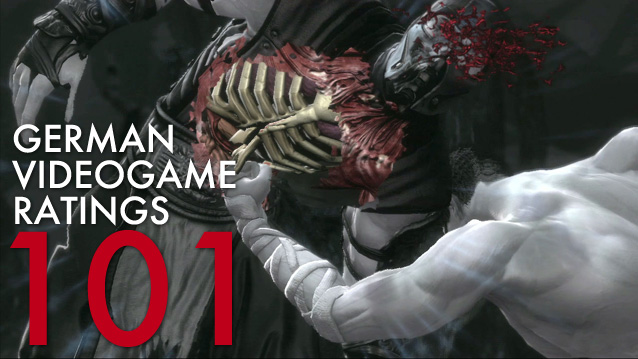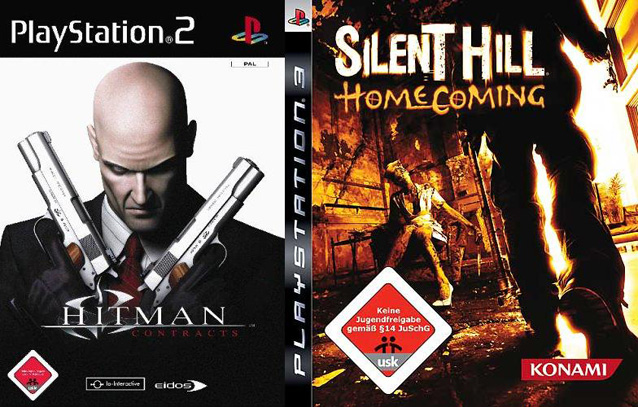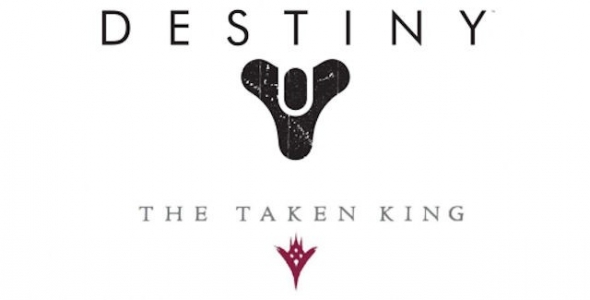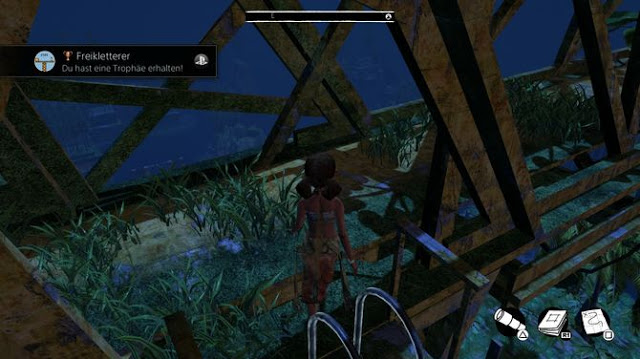


Globally, there are very few countries that are as hard on video games as the one I live in. Germany is notoriously anal retentive when it comes to rating and legislating gaming, rivaled only by Australia’s absence of an 18+ rating, and the various raving mad regulations various Asian countries, among them of course China’s total ban on consoles.
Germany’s reputation in the gaming world is not uncalled for. We hate violence. We hate Nazis. Yet we do not have that much of a problem with sex. Also we apparently love to ban games outright, in a "verboten!" kinda way—which is only halfway true, but it is part of Germany's reputation.
But how does the German media banning—pardon—"media rating" system actually work? Few people know. Few Germans know. First of all, we have the BBFC / PEGI / ESRB equivalent, the USK—Unterhaltungssoftware Selbstkontrolle (Entertainment Software Self-Monitoring)—a half-independent body run as a limited liability company.
The USK is working in conjunction with Germany’s two big game developer’s organizations (Bundesverband Interaktive Unterhaltungssoftware, BIU; Bundesverband der Entwickler von Computerspielen, GAME) to organize the rating process, which is then conducted by state appointed, independent (non-entertainment software industry) experts, usually teachers, social workers and journalists.

The actual rating process is a bureaucratic monstrosity. First of all, not all games are automatically rated, the publisher has to hand in a copy of the version that’s supposed to be shipped to the German market. Capcom had to experience how little room for interpretation there can be for "version supposed to be shipped" when they received their 18+ rating for Resident Evil 4 back in 2004: The version the USK rated did not include the Mercenaries minigame, so when it came to actually publishing Resident Evil 4 in Germany, Capcom was forced to remove the Mercenary Missions, or face refusal of rating for the game and have it banned from open sale (more on that later on), which eventually led to the Resident Evil 4 (GCN) version that went on sale here, entirely without the Mercenary Missions, and was rated 18+.
The first thing that happens after the publisher hands in a copy is to provide a handful of playtesters some time to experience the game, from start to finish, pick out certain parts, and prepare a presentation in terms of juvenile protection in front of a board of censors. As the game is presented, the censors who then arrive at a conclusion of which rating the game should receive. The board of censors then hands their proposition of a rating to the appointed deputy of the major juvenile affairs bureau, who then decides based on the approval of the censor’s board what—if any—rating the game in question should receive.
At this point, the publisher can then accept the rating, or appeal it, which triggers two more rounds of bureaucratic nightmares.
Unlike in the US, the ratings of the USK are binding for vendors. There are five levels:
Keine Altesbeschränkung (No age restriction)
Freigegeben ab 6 Jahren (Restricted 6)
Freigegeben ab 12 Jahren (Restricted 12)
Freigegeben ab 16 Jahren (Restricted 16)
Keine Jugendfreigabe gemäß § 14 JuSchG (Not for sale to minor according to § 14 of the juvenile protection law)

So far so good. It’s the 18 rated (or rather "not for sale for minors") games that make this whole thing really interesting. This is just the first layer of ratings we have. The other layer starts with the USK’s 18 rating, and gets more and more obscure.
First of all, this is where yet another media monitoring body comes into action, the BPjM, the Bundesprüfstelle Jugendgefährdende Medien (Federal Monitoring Agency for Youth Endangering Media), a federal institution that can be called forth by a state persecutor to check whether or not the call for blacklisting of youth endangering media is justified by law, and if it is blacklist the item in question. If a game (or movie, or book for that matter) is blacklisted by those folks, a list of rules is applied to that media. First of all there is a ban on advertising. Second is a ban on open sale, which means that blacklisted media are not allowed to be sold openly where minors could see the product (sale in a separate area of the store is allowed, or under the counter). Third is a heavy restriction on mail order sales, since the product has to be personally delivered with the mailman checking the recipients ID, pushing up the shipping fees to a minimum of 5€.
The interesting side story to these laws is that the USK ratings used to be non-binding recommendations before the year 2003. In the wake of moral panic induced populist policy making that ensued after the Erfurt school shooting of 2002 however, the whole legislation on juvenile protection was changed and eventually the USK ratings became legally binding.
It should not remain the only instance policy changes came into practice after a school shooting, yet those remain the farthest reaching for gamers, and fans of horror movies, but that is an entirely different can of worms.
All these rules make it very hard to publish a blacklisted game in Germany, which is the reason why for example Microsoft decided to not even try, should one of their games ever score a place on the lists, which is why Germany doesn’t have Gears of War. These rules also make it impossible to review a blacklisted game in gaming mags, since a positive review could be seen as advertising, and would result in a confiscation of the issue of the gaming mag that dared to do such a thing—which actually happened a bunch of times in the 90s.
Another side effect of these rules are the infamous de-violenced German versions of games. Most prominently Half-Life, which had all blood removed from the German version, and replaced the marines with robots. The German version received a 16+ rating, and the international version was blacklisted. Likewise, the Command & Conquer series suffered similar censorship that hurt the game's presentation and affected its backstory, as all human soldiers on the battlefield were replaced by robots. The manual to Red Alert even stated that robot warfare was always conducted in remote locations so that no humans could be harmed. Even the farmers and dogs were re-dubbed into robots so the game could receive a rating that would allow the publishers to advertise the product. Then there are the countless games with green blood, or generally reduced violence. Fallout 3 has all gore removed in Germany and is still 18 rated.

Which leads us to the real irony of this whole situation, with Fallout 3 being a very good example: The German version of Fallout 3 can only legally be bought by a person older than 18. This version is censored so it can be advertised and sold openly, for example at electronic retail chains and GameStop. An international version of the same game, one that is *not* censored, and that may even feature a German localization (if it is a printing that is also sold in Switzerland or Austria) can also only be bought by a person older than 18, only that since this is an international version, it cannot be sold or advertised openly since it has not been rated by the USK, which would also be the case if the game had been blacklisted (and, well a lot of international versions of games free for sale in their butchered form in Germany are blacklisted—Borderlands, Fallout 3, the list goes on...).
Imports make for even more stories of bureaucratic stupidity. All imports are by default not for sale to minors, and may not be advertised, putting them on the same level as blacklisted media.
But there is a catch. Since imports, especially self-imports, are conducted from out of the country, the vendor that sells the media is not bound by German law to send these items out with the extra ID-check postage, making imports from other EU countries and especially from Britain often times a lot cheaper than buying domestic. If a German customer orders a cut, but 18 rated version of a game at a German online retailer, this customer would have to pay extra, ID-checking shipping fees, since the obligatory ID check applies to all 18 rated media.
Beyond this, there is however yet another layer—confiscation.
Very, very fews games are subjected to that. The original Mortal Kombat for the Mega Drive was confiscated by the authorities, as have been Rockstar’s Manhunt and both titles in Monolith’s Condemned series. One of the criteria that subjects a game to being confiscated by authorities is the glorification of violence, another is glorification of war.
The most solid one however is the usage of symbols of anti-constitutional institutions: Nazi symbols. SS runes, swastikas, those are forbidden in Germany, unless used for artistic purpose. Art Spiegelman’s “Maus” graphic novel had a real hard time at first over here, since despite the subject matter, it used these symbols in a comic book, which was not (and—in general—is still not) considered art. Maus was an exception, Captain America never fights Nazis in German comic books, only people who fly Messerschmidt’s with weird grids where you’d expect the swastika.
Confiscated games are banned from sale. Selling and buying, even importing them is illegal. Owning them is not, unless they contain anti-constitutional symbols. Confiscations have to be brought into motion by district courts, but apply statewide.

Page 1 Page 2




 Destiny: The Taken King Tricks to Get Ir Anuk & Ir Halak Grimoire Cards
Destiny: The Taken King Tricks to Get Ir Anuk & Ir Halak Grimoire Cards Learn how to use Windows 10 to record gameplay video
Learn how to use Windows 10 to record gameplay video Submerged: Free Climber Trophy (Bronze)
Submerged: Free Climber Trophy (Bronze) Dying Light: Locate EXPcalibur and its Blueprint
Dying Light: Locate EXPcalibur and its Blueprint The Witcher 3: Wild Hunt Location Guide: Where To Find All The Keys
The Witcher 3: Wild Hunt Location Guide: Where To Find All The Keys